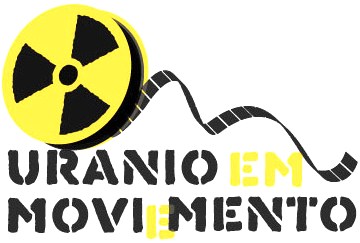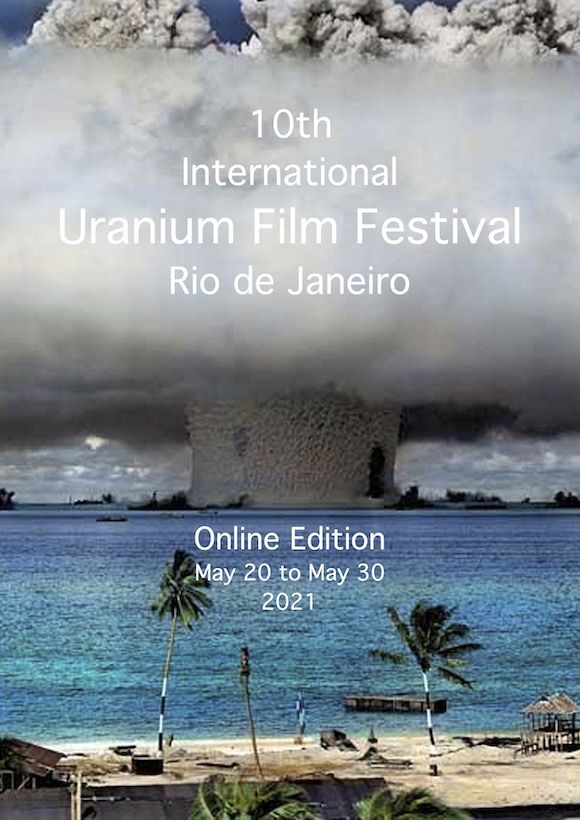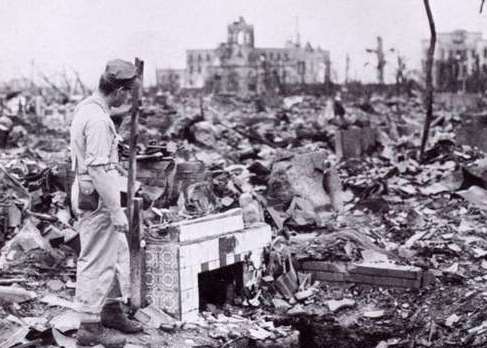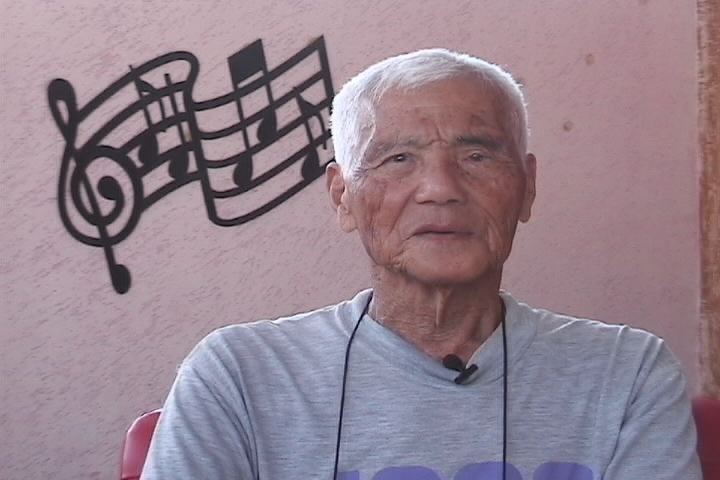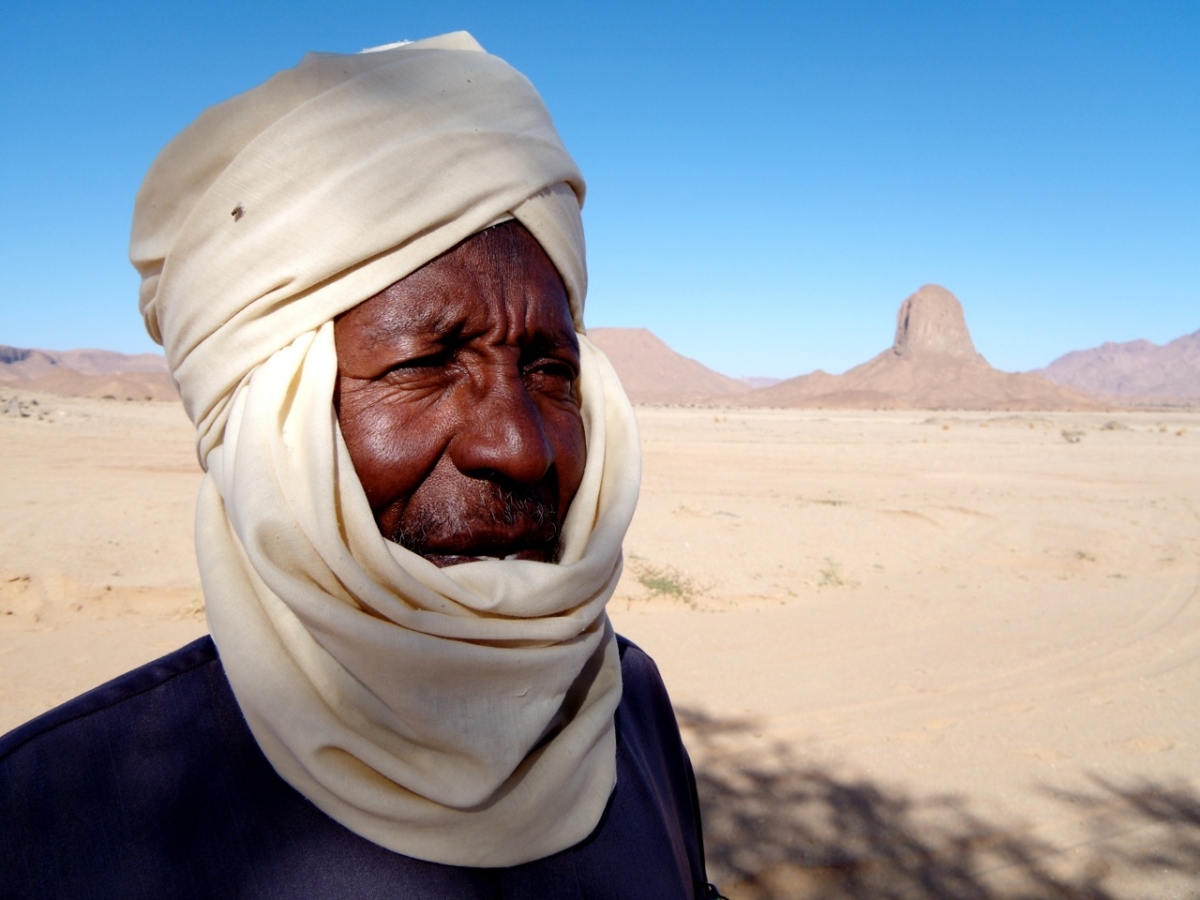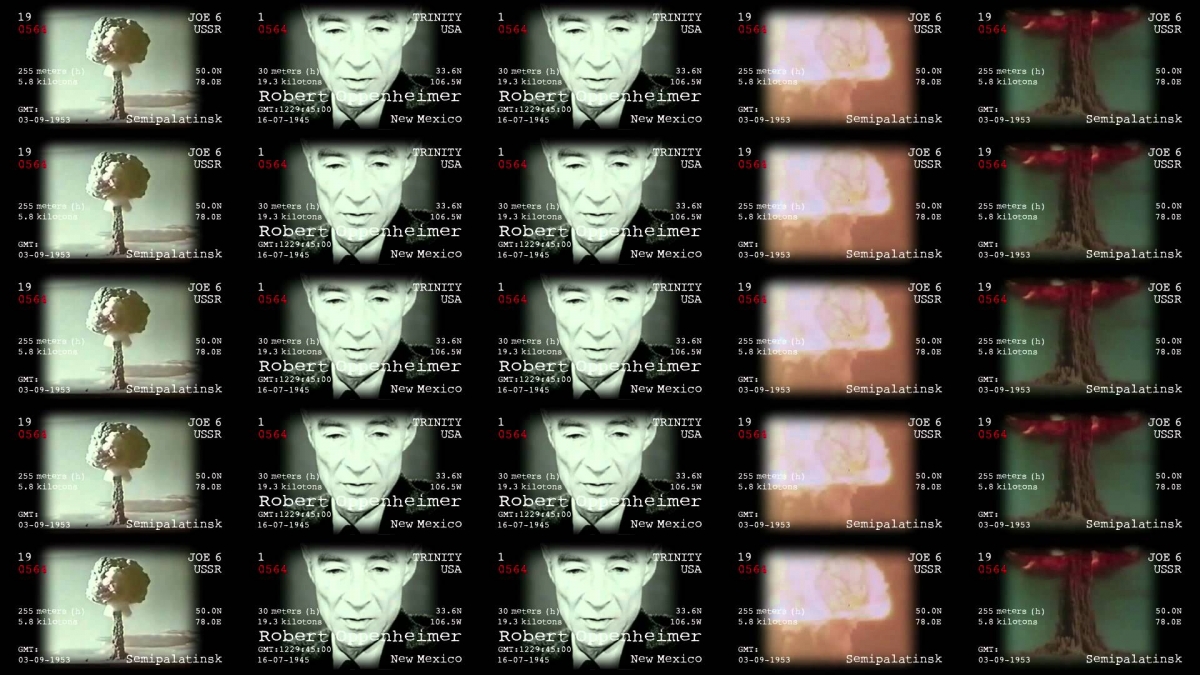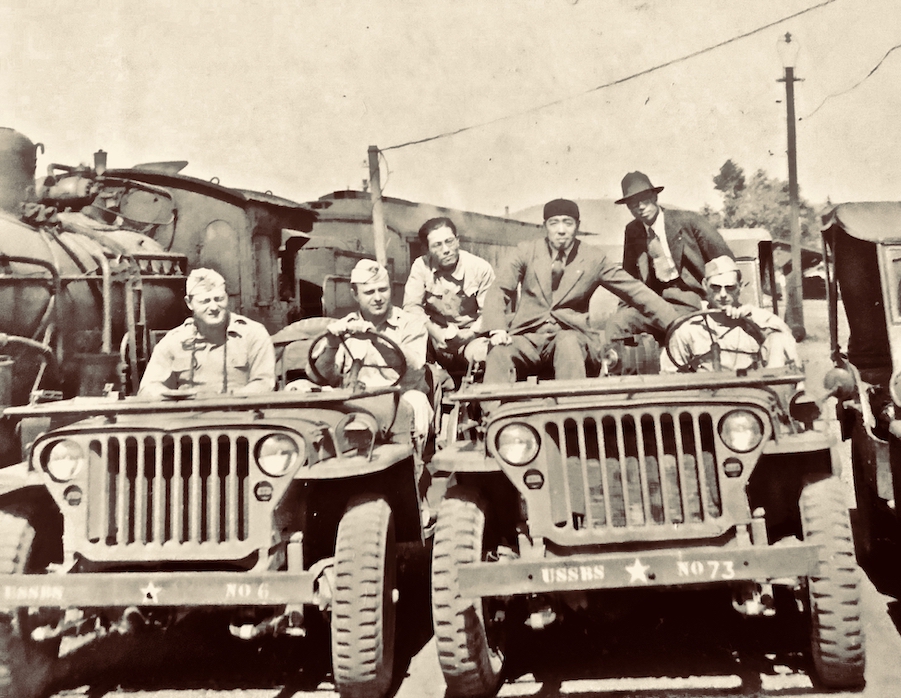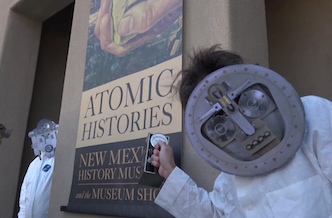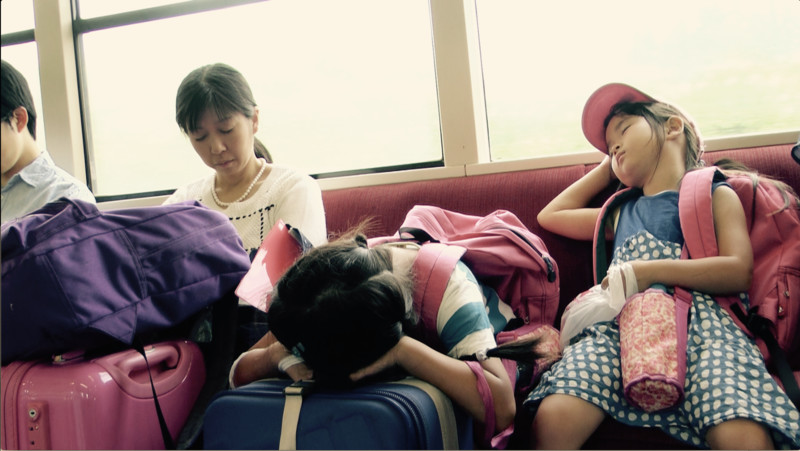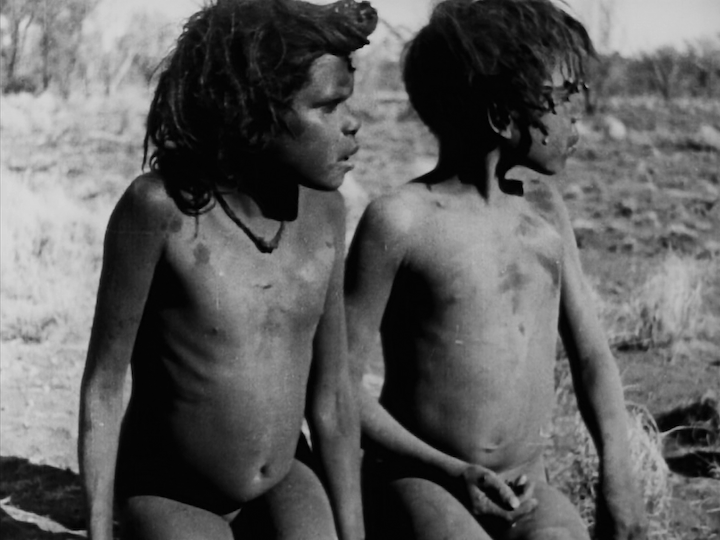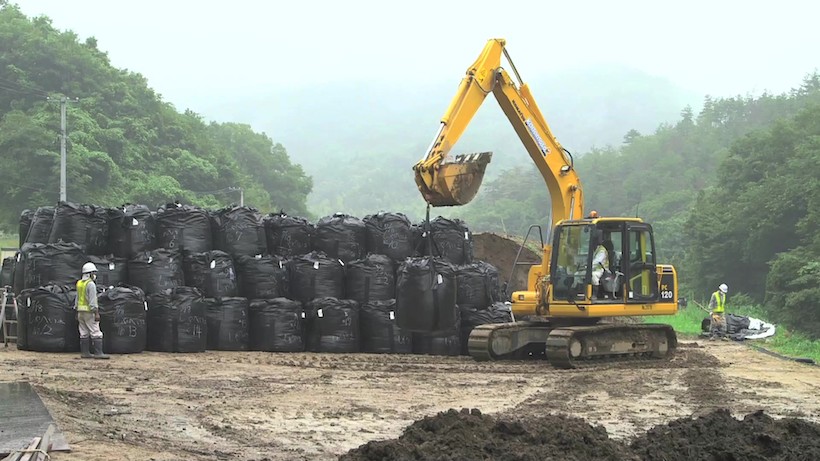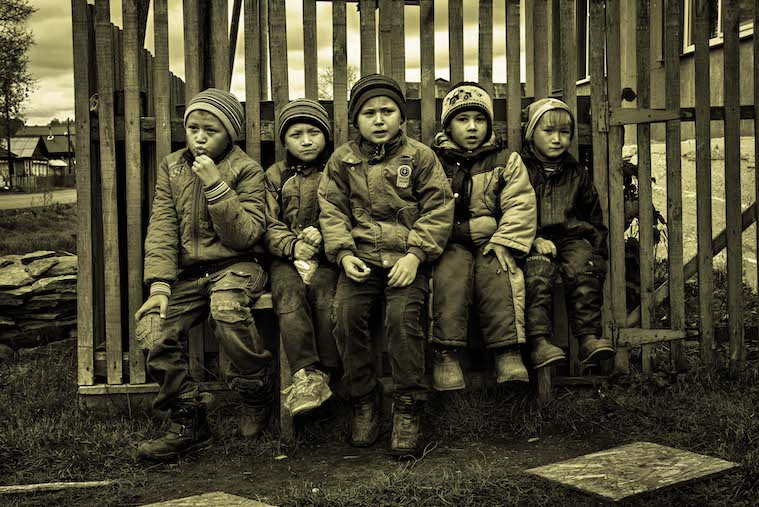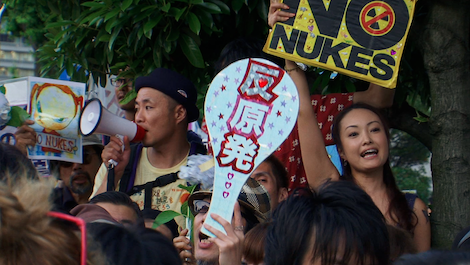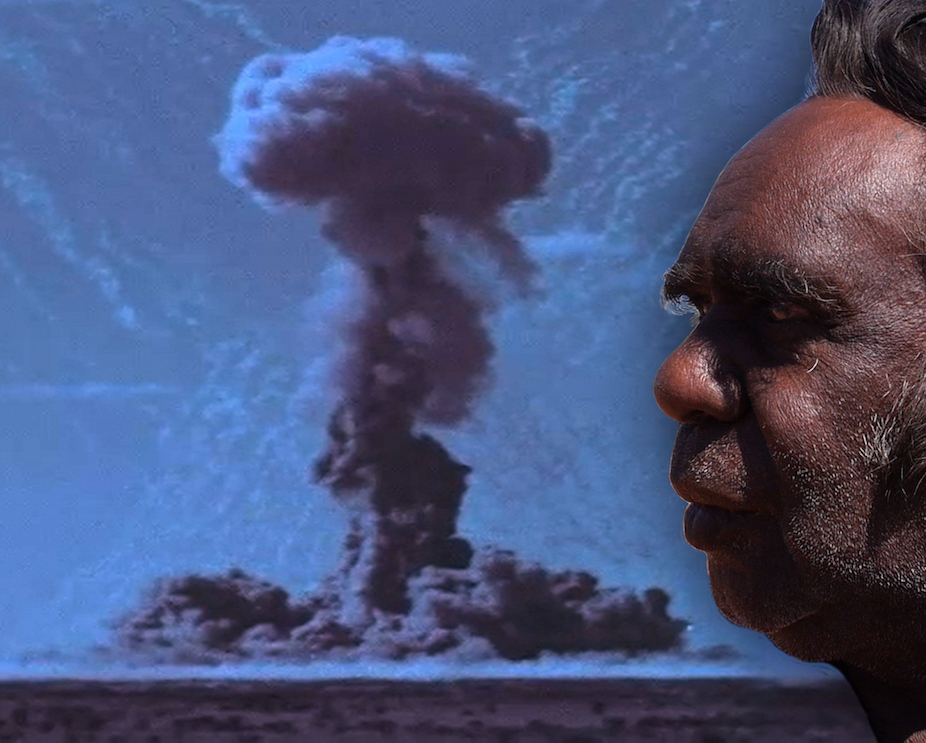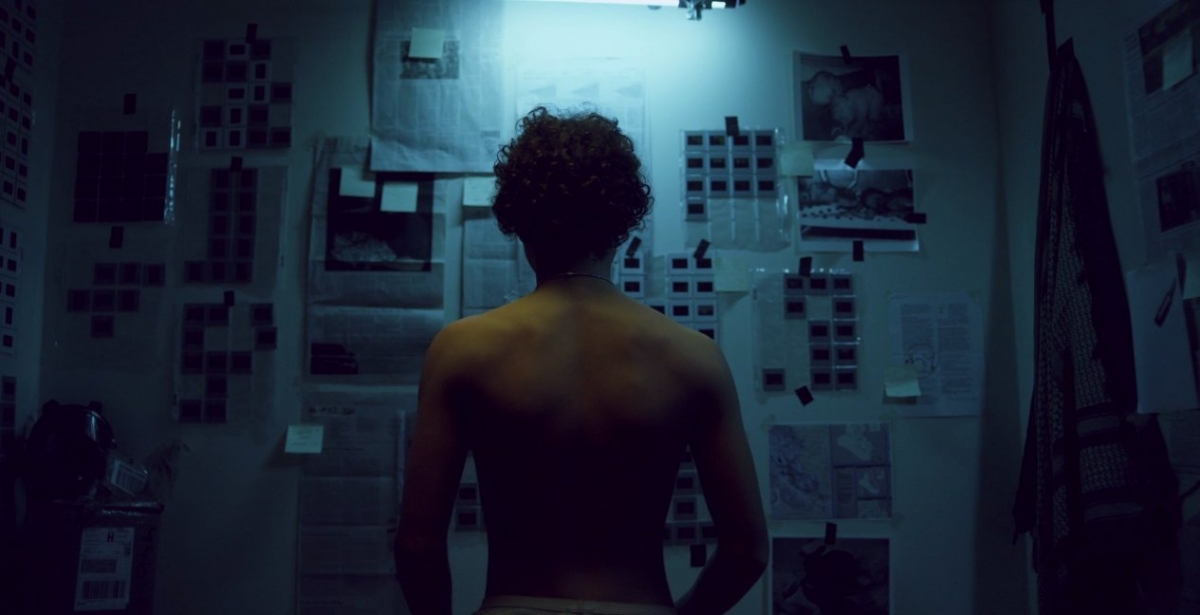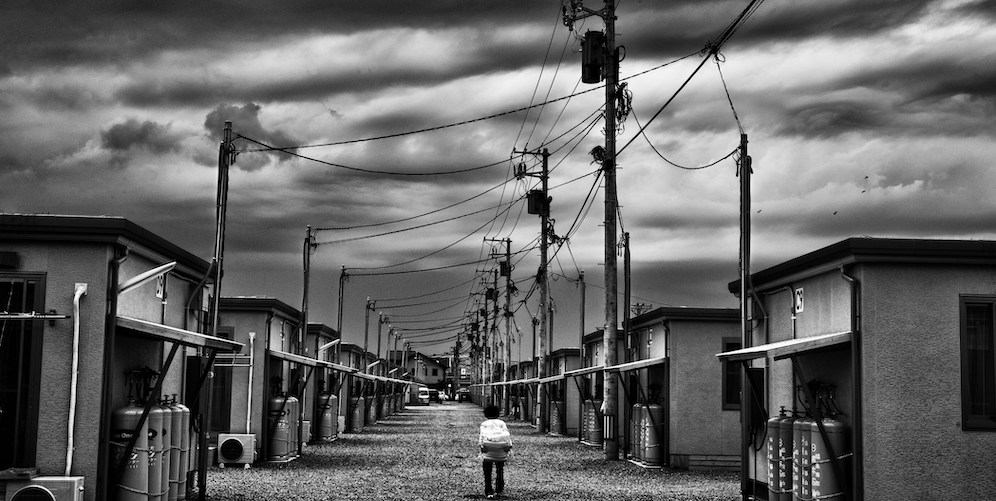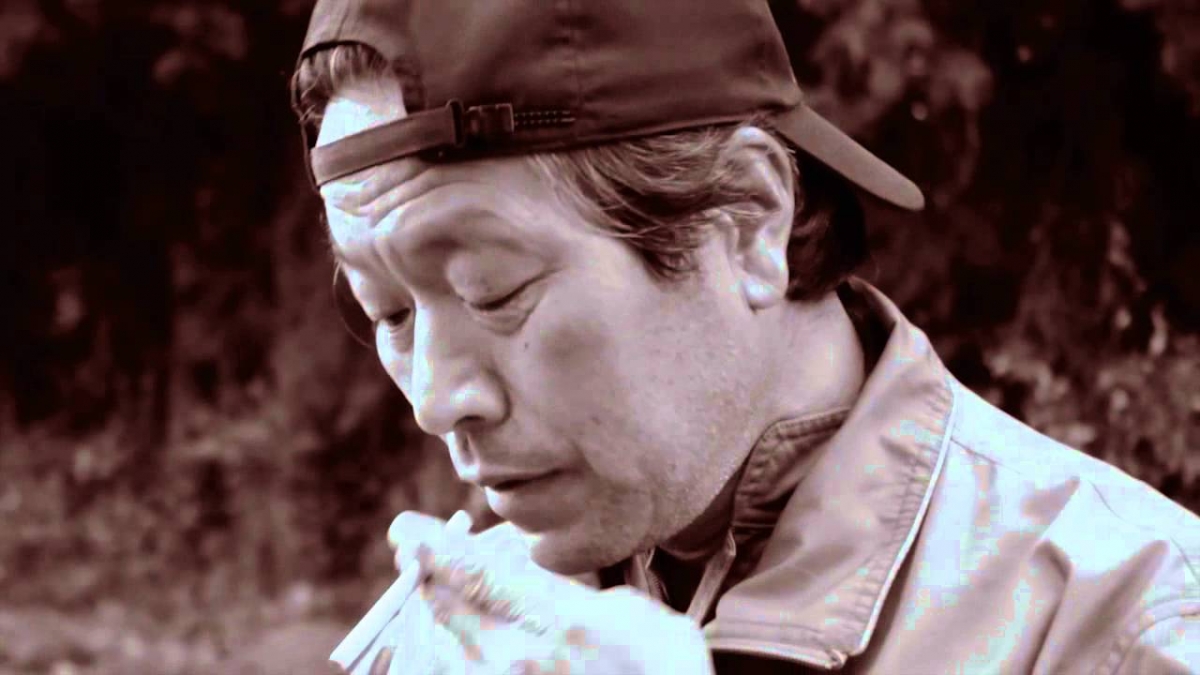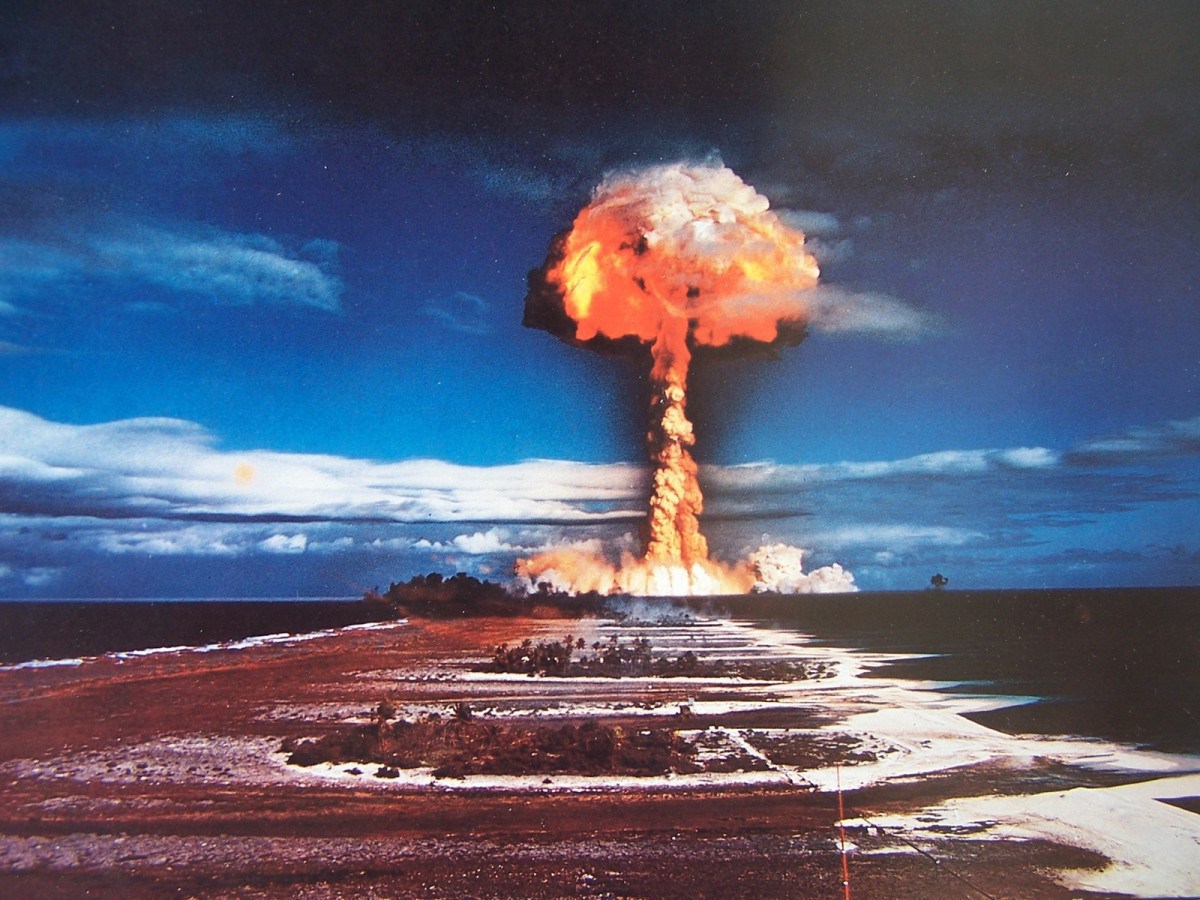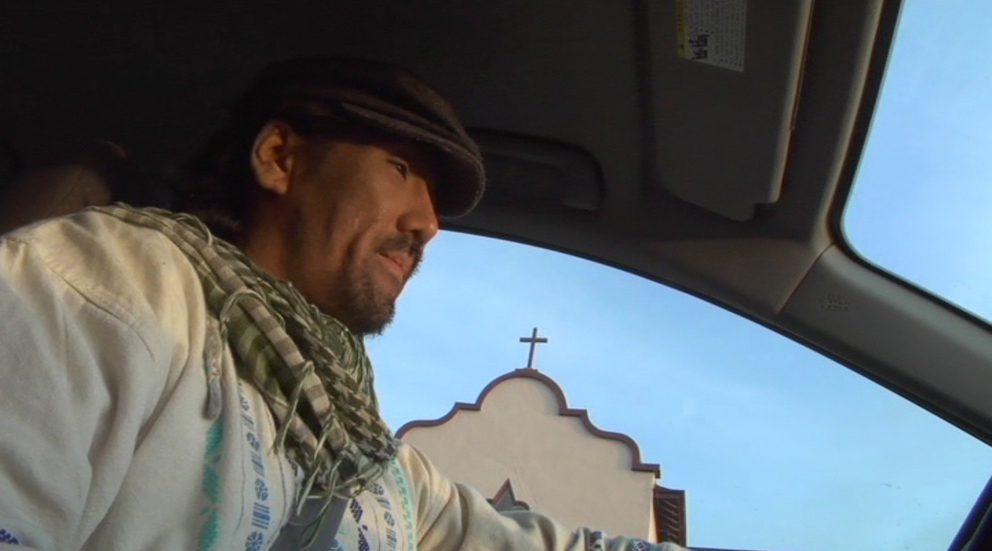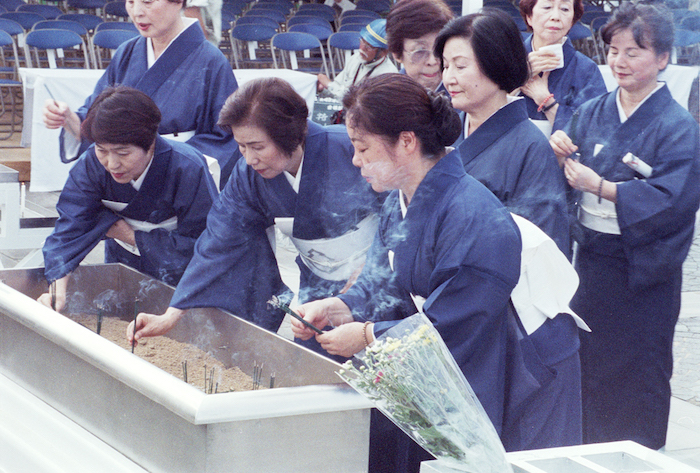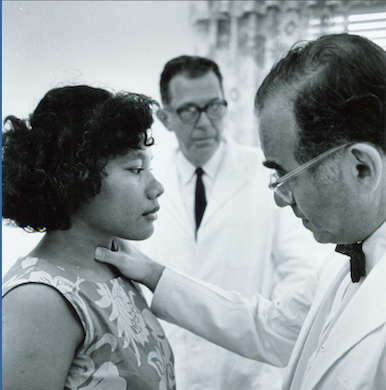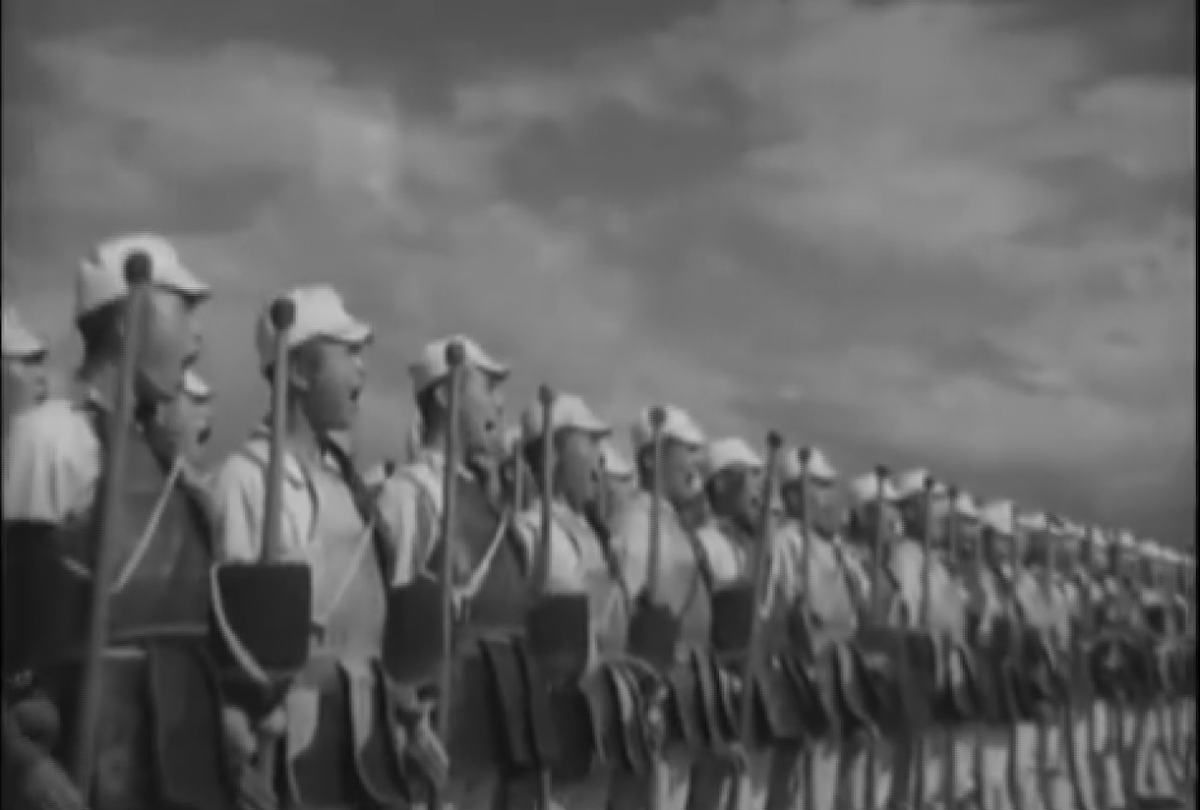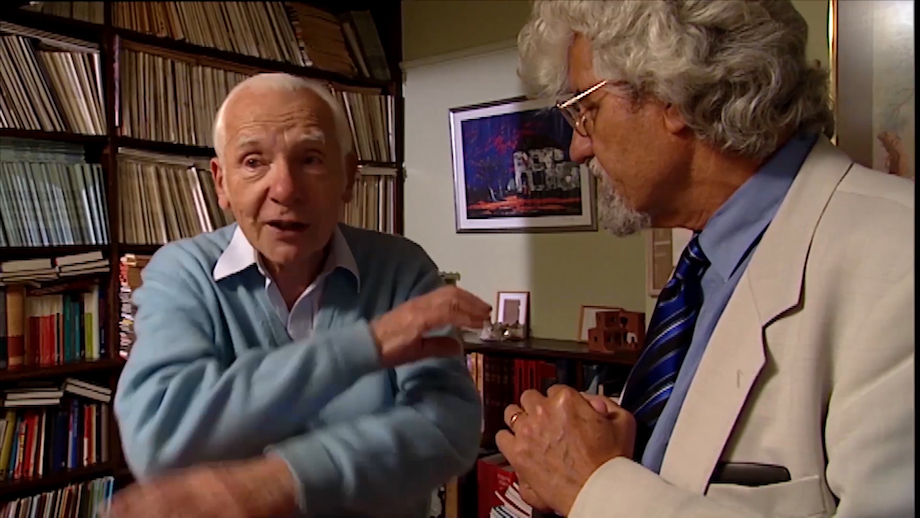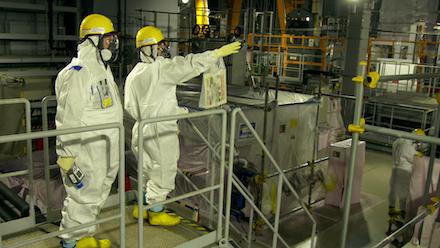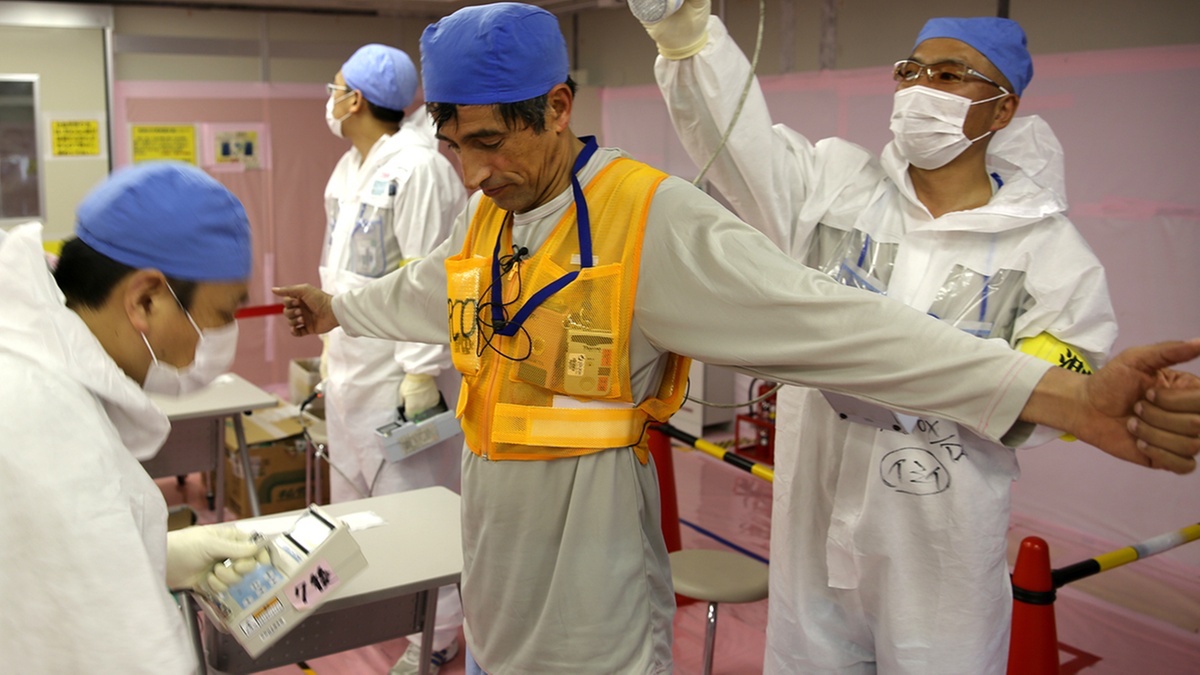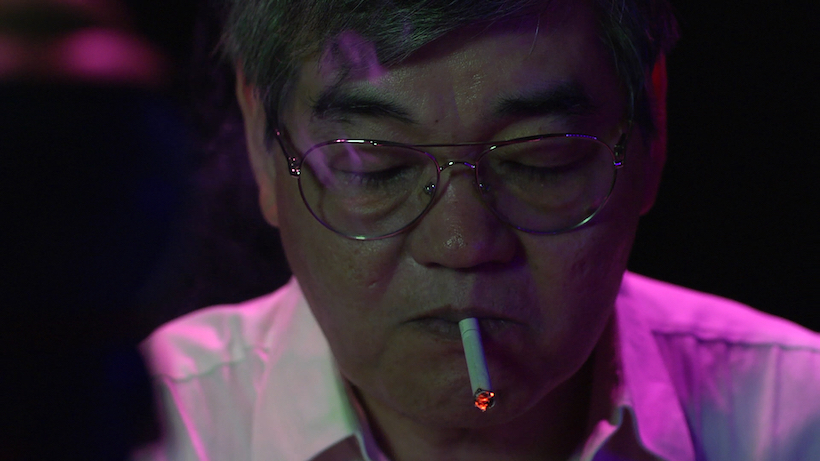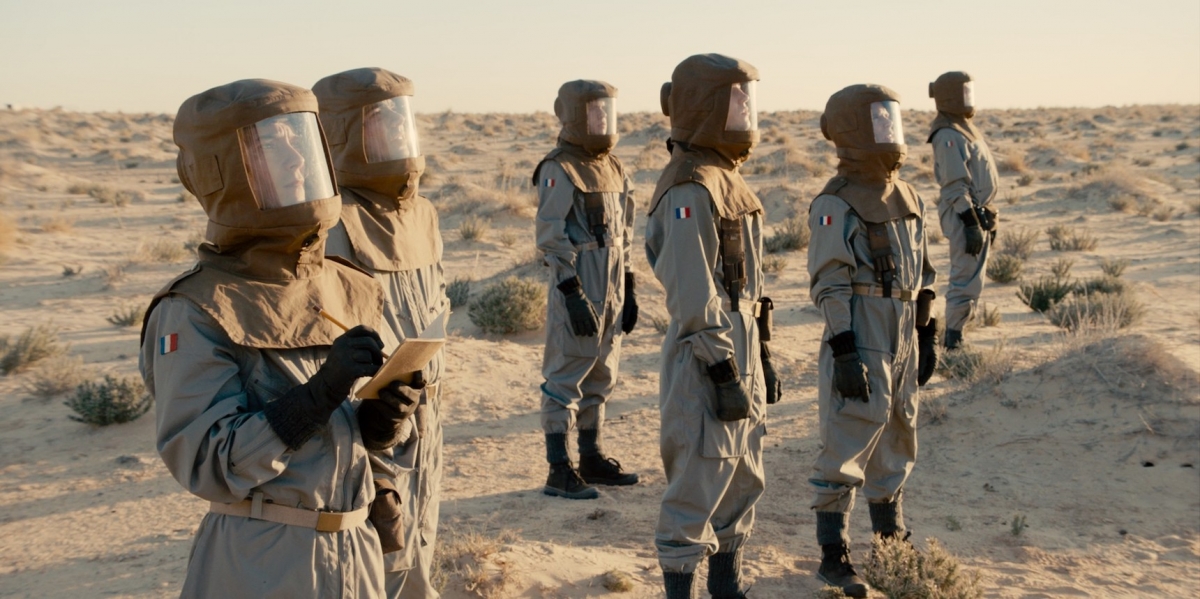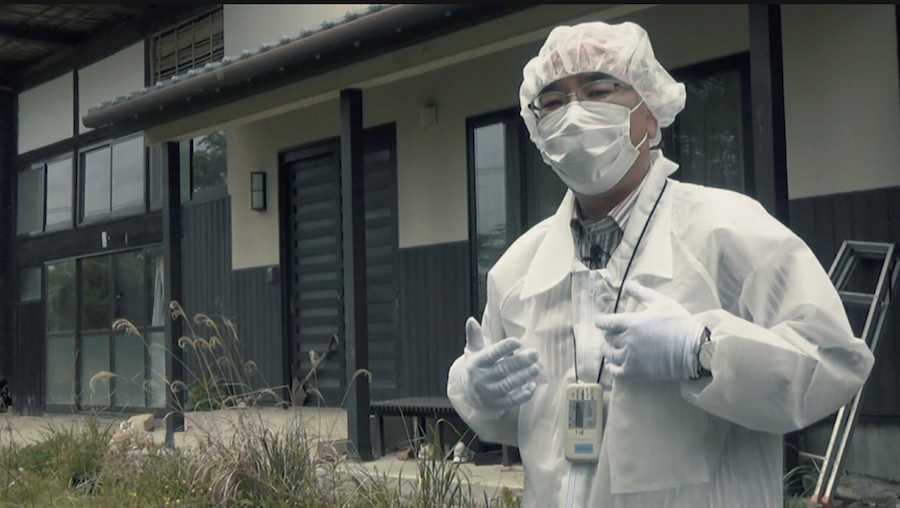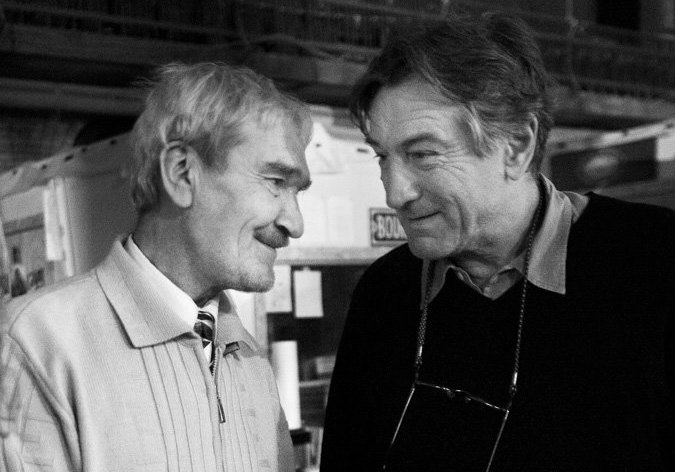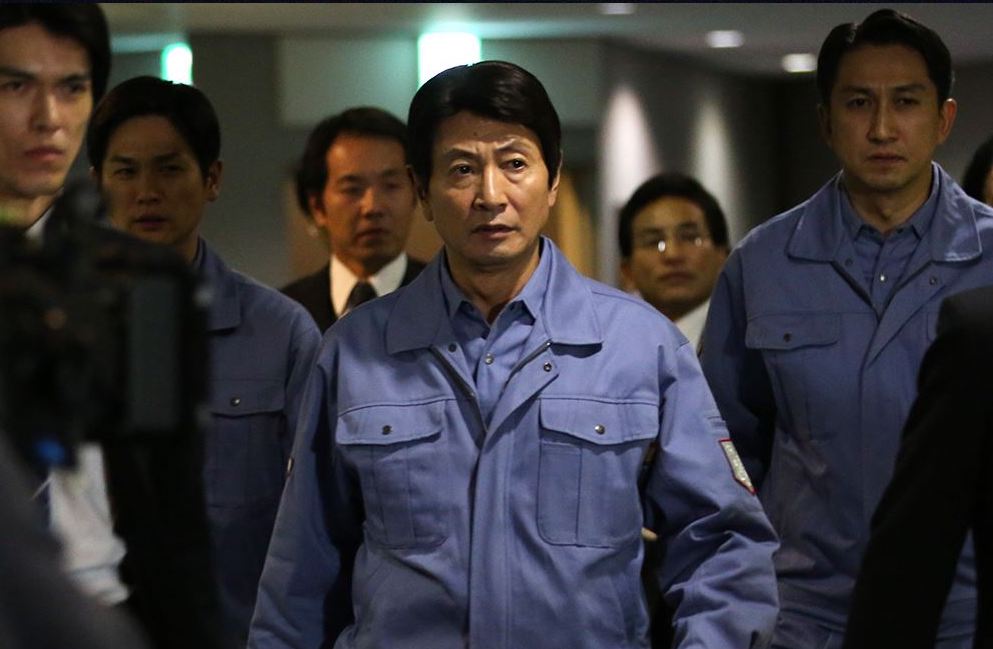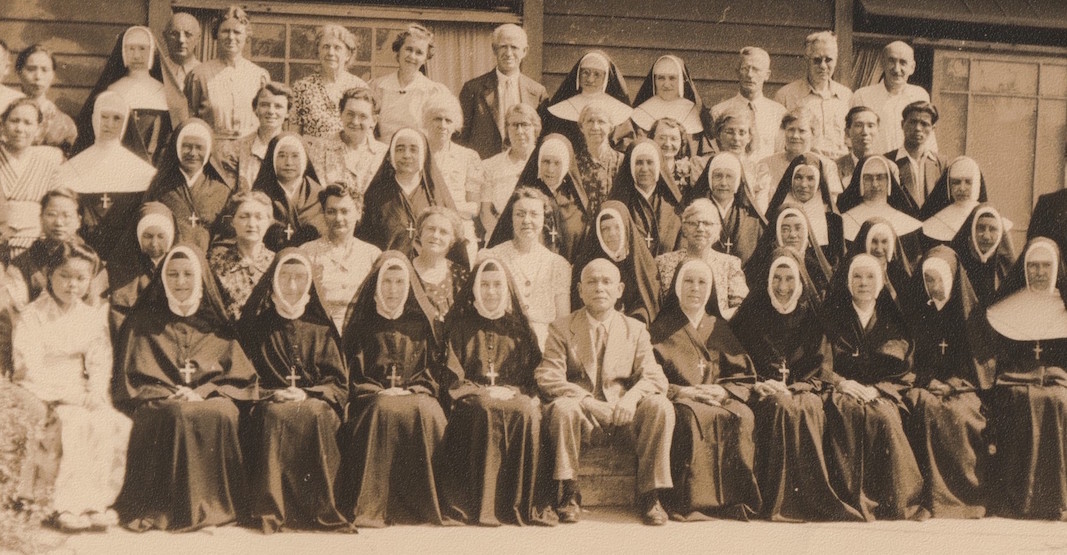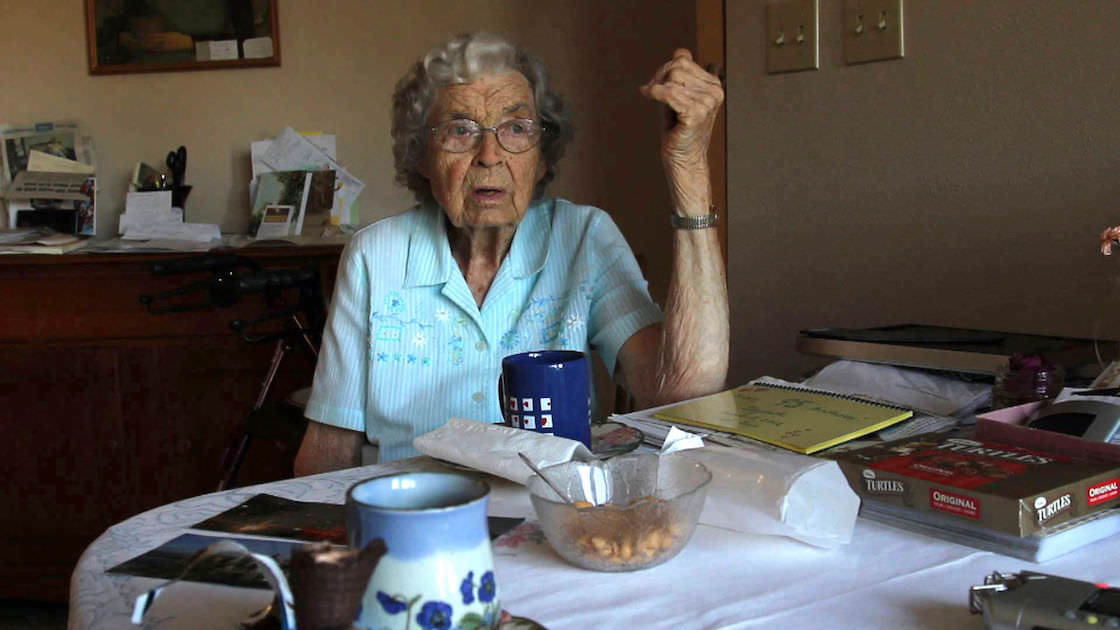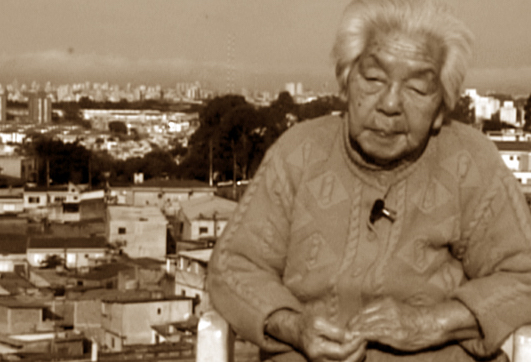10th International Uranium Film Festival Rio de Janeiro
Online for free from May 20 to May 30, 2021
The 10th International Uranium Film Festival Rio de Janeiro remembers the still unsolved nuclear accident in Fukushima 10 years ago and the UN treaty on the prohibition of nuclear weapons, which has been in force since January of this year. Due to the ongoing Covid-19 restrictions It will be the festival’s first online edition with support by the Cinematheque of Rio de Janeiro’s prestigious Modern Art Museum (MAM Rio).
The festival has selected 34 documentaries and movies by 26 filmmakers from 15 countries. The films will be screened for free online from May 20 to 30 at the MAM Rio platform. Two live online events complete the program.
On May 20 (7 pm Rio time) the festival opening features three atomic bomb survivors from Hiroshima, who live in Brazil, and Akira Kawasaki, coordinator of the Peace Boat Foundation. And on May 24th (4 pm Rio time) the festival's live online guests will be former Brazilian Ambassador Sérgio de Queiroz Duarte who has dedicated his life as a diplomat to end the nuclear threat and Cristian Ricardo Wittmann, member of the International Campaign to Abolish Nuclear Weapons (ICAN).
The video greetings for the opening of the online film festival come from Biologist and parliamentarian Klaus Mindrup, member of the German Bundestag of the Committee for the Environment, Nature Conservation and Nuclear Safety, and from Manfred Mohr, Professor of International Public Law, spokesman for the International Coalition to Ban Uranium Weapons (ICBUW), founding member of the International Association of Lawyers against Nuclear Weapons (IALANA) and ICAN-member.
-
Free Online Screening Link (available from May 20 to 30)
- Program MAM Rio
Selected films (alphabetical)
Brazil/Argentina, 2012, Director Roberto Fernández, 77 min, documentary, Portuguese.
August 6th, 1945. At 08:15 the city of Hiroshima is attacked by the USA. The world‘s first atomic bomb destroys the city and killed thousands of people. Some of the A-bomb survivors, called Hibakusha, moved later to Brazil. Mr. and Mrs. Morita from Hiroshima created in São Paulo the “Associação das Vitimas de Bomba Atômica”, a foundation to support the Hibakusha in Brazil and to struggle for their rights as Atomic-Bomb victims. TRAILER
Brazil/Argentina, 2014, Director Roberto Fernández, Producer: O Movimento Falso Filmes, Documentary, 31 min, Portuguese.
It happened on August 9th in 1945. It is 11:02 o clock in the morning. The U.S.A dropped the second atomic bomb on the city of Nagasaki. Tens of thousands of civilians died a horror full death. Some survived. And some of these survivors - called Hibakusha - came to live in Brazil. Roberto Fernández tells their stories. TRAILER
Algeria, 2011, 52 min, Director Larbi Benchiha, Producer Jean François Aumaitre. Documentary, French with Portuguese subtitles.
Why did France spend a lot of money and take the risk of bringing the atomic bomb to Algeria while the uprising is being organized and growing? The issue of the Sahara and the military nuclear tests were at the center of the secret negotiations between the French government and the FLN delegation. For the French General de Gaulle, the Sahara was not part of Algeria. For the FLN, however, the Algerian territory extended into the Sahara. The Evian Accords, signed on March 18, 1962, finally ended the Seven and a Half Years' War. France recognized Algerian sovereignty in the Sahara. In return, the FLN accepted that France had various military bases and would carry out its nuclear tests in the Sahara of Algeria for five years. A total of 17 nuclear explosions were carried out in Algeria. Some of them had "incidents". The worst nuclear accident occurred on May 1, 1962. TRAILER
UK/The Netherlands, 2011, 13 min, Art & Experimental documentary, Language: Multilingual, Director: Peter Greenaway, Video Design Irma de Vries, Producer Change Performing Arts.
Very surprisingly from 1945 to 1989 - there have been 2201 atomic bombs dropped on the planet Earth - an astonishing number of atomic bombs implying huge destruction and fall-out. The film shows evidence of every bomb explosion documented with the nation responsible, the date and location, the force and the height about earth or sea level in a relentless build up of accumulating destruction that is both awe-inspiring and dreadful in the true biblical sense of of the phrase - full of dread. ABOUT THE FILM and ABOUT GREENAWAY
USA, 2021, Director: Greg Mitchell, Co-Producers: Greg Mitchell and Suzanne Mitchell, Documentary, 52 min, English, Portuguese subtitles. LATIN AMERICA PREMIERE
The widely-acclaimed 2021 film Atomic Cover-up is the first documentary to explore the bombings of Hiroshima and Nagasaki in 1945 from the unique perspective, words and startling images of the brave cameramen and directors who risked their lives filming in the irradiated aftermath. It reveals how this historic footage, created by a Japanese newsreel crew and then an elite U.S. Army team (who shot the only color reels), was seized, classified top secret, and then buried by American officials for decades to hide the full human costs of the bombings as a dangerous nuclear arms race raged. All the while, the producers of the footage made heroic efforts to find and expose their shocking film, to reveal truths of the atomic bombings that might halt nuclear proliferation. Atomic Cover-up represents, at least in part, the film they were not allowed to make, as well as a tribute to documentarians everywhere. TRAILER and ABOUT THE FILM
USA, 2021, Director, Writer and Producer Adam Jonas Horowitz, Documentary / Comedy, 36 min, English, Portuguese subtitles. WORLD PREMIERE
ATOMIC GODS is a series of surrealistic, black-comedy short films that reveal for the first time the secret, unknown, (and perhaps even forbidden), 'Creation Myths of the Bomb.’ It is actually a „Mockumentary" about J. Robert Oppenheimer and the birth of the Atomic Bomb. A biting satire that is at once both historic and futuristic, this dark episodic series serves as a post-nuclear fairy tale. Produced, Written, and Directed by Adam Jonas Horowitz, "ATOMIC GODS" is partially funded by a grant from the Fulcrum Fund grant program of 516 Arts, made possible by the Andy Warhol Foundation for the Visual Arts.
Japan, 2018, Director Ayumi Nakagawa, Documentary, 65 min, Japanese with English or Portuguese subtitles. LATIN AMERICA PREMIERE
There are many evacuees who had been driven into the poverty after the Japanese government cut off the housing subsidies for those who fled their house after the nuclear disaster in Fukushima in March 2017. Kazuko, who fled her house to Tokyo with her two primary school daughters, has to work over the weekend to pay the expensive rent in Tokyo. She is irregularly employed, which means that if she gets sick, it would affect her income. There are still 70,000 evacuees from contaminated area and this is the documentary to address once again, what is the actual revitalization. TRAILER
Australia, 2005, Director Katherine Aigner, Documentary, 49 min, English and Aboriginal Australian, Portuguese subtitles.
Sacrificial lambs to the slaughter: Australian Atomic Confessions is the story of the 12 British atomic bomb tests in Australia seen through the eyes of Aboriginal elders, atomic veterans and experts. "That uranium belongs to us" says Uncle Kevin, "we knew about that long before the white man came here, it's our responsibility, it's part of the Dreamtime" With the building of a new $500 million nuclear reactor in Sydney, the expansion of more multi-national uranium mines and the community opposition to having an international nuclear waste repository 'in our backyard', the fight is on ... The film is a chilling expose of nuclear testing and the demaging legacy that continues these day. TRAILER
The Netherlands, 2014, Director and Producer Tineke van Veen, Documentary, 14 min. Japanese with Portuguese subtitles.
The short documentary & film-installation elaborates on the cleaning of the landscape, people who clean the landscape and the landscape itself. Landscape conceived as a space, both natural and cultivated, dynamic and cultural, an environment in which we “stay”, move, develop and exist, where social- and power relations play an important role. Landscape as a reflection, as a form of exchange and identification. How do we relate to this traumatized landscape? The evacuees are not only confronted with loss of their native soil, there is also the problem of no return because of nuclear radiation. TRAILER
Italy, 2015, Director Alessandro Tesei, Photography Pierpaolo Mittica, Production Mondo in Cammino Productions. Documentary, 64 min. English/Russian with Portuguese subtitles.
What happened in Mayak is one of the most serious ecological disasters caused by man and hidden for decades. It was the first major nuclear accident and caused radioactive contamination 20 times that of Chernobyl. Mayak nuclear plant is situated in the Urals in the Chelyabinsk region, about 1,500 kilometres from Moscow. It was built in 1948 to create the plutonium needed to build the first soviet atom bomb. There were in fact three main „nuclear“ accidents in Mayak: The first one happened between 1949 and 1952, when the Mayak plant poured all radioactive waste into the river Techa. TRAILER and ABOUT THE FILM
Keiko Courdy, France /Japan, 2013, 94 min, documentary, Japanese e French, English or Portuguese subtitles.
A film on Japan after the Fukushima nuclear accident. Fukushima is a parallel world. From the outside, everything seems normal. Away from the forbidden zone, life goes on exactly as before. The danger now is invisible. Some say that all is fine, all is under control. But today, nothing is resolved. TRAILER
Australia, 2015, Produced and Directed by Kim Mavromatis and Quenten Agius, MAV Media in Association with NITV (National Indigenous TV Australia). Documentary, 5 min, English and Antikirrinya, English / Portuguese subtitles. LATIN AMERICA PREMIERE
In the 1950’s and 1960’s the Australian government authorised British Nuclear testing at Emu Field and Maralinga in Outback South Australia. We journey with Antikirrinya Elder, Ingkama Bobby Brown to his homelands in outback South Australia where he explains the legacy of living with British Nuclear testing - how he witnessed the first tests on the Australian mainland at Emu Field (1953) and experienced the devastating affects of radioactive fallout on his family, people and country. This is the first time Bobby has spoken out about what he witnessed when he was a boy - what happened to his family and country and the people who went missing - during British Nuclear testing. British Nuclear testing was a breach of the King's Letters Patent, the founding document that established the state of South Australia (1836), which granted Aboriginal people the legal right to occupy and enjoy their land for always. How could they occupy and enjoy their land when their land was being blown up and irradiated by nuclear fallout. ABOUT THE FILM
-
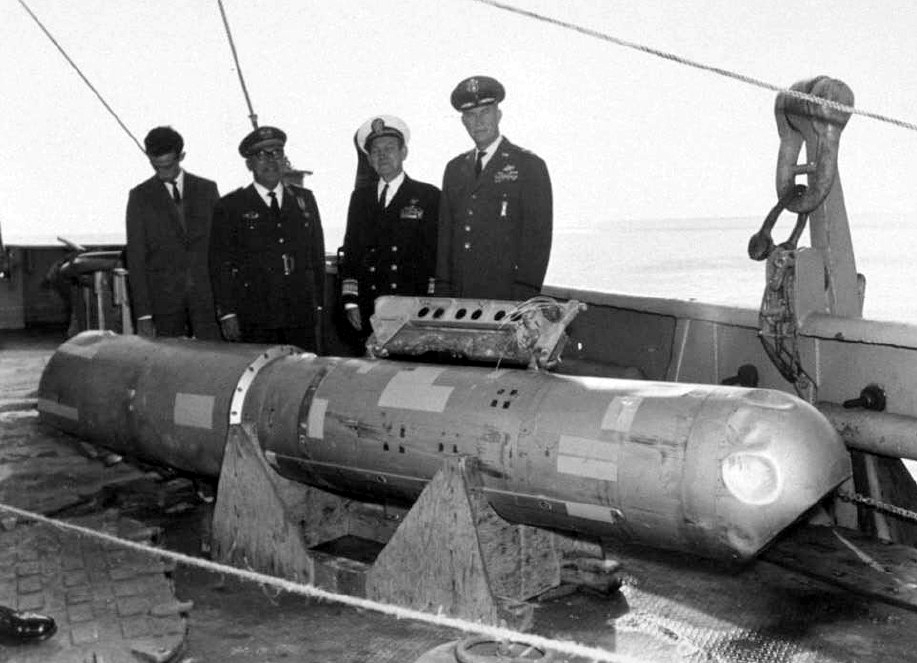 Broken Arrow. Nuclear Accident in Palomares (Operación Flecha Rota. Accidente Nuclear en Palomares)
Broken Arrow. Nuclear Accident in Palomares (Operación Flecha Rota. Accidente Nuclear en Palomares)
Spain, 2007, Director: Jose Herrera Plaza, Producer: Antonio Sánchez Picón, 96 min, Documentary, Spanish-English, Portuguese subtitles.
In the middle of the Cold War, on 17 January 1966, B-52G bomber of the United States Air Force collided with a KC-135 tanker plane during mid-air refueling over the fishing village Palomares near the city of Almería in southern Spain. The KC-135 exploded and the B-52G bomber broke apart - with with four powerful nuclear hydrogen bombs on board. The atomic bombs fell from sky. When they hit the ground near the fishing village, the conventional charge of two atomic bombs exploded. Radioactive and highly toxic plutonium was distributed across the region. Surprisingly, one atomic bomb remained intact. The fourth Hydrogen bomb fell into the sea off the coast. The US Navy searched for the sunk bomb near the coast for weeks. That was bad news for the local population, Franco's Spanish government and property speculators who wanted to develop the region into a resort for mass beach tourism. TRAILER
Brazil/USA, 2015, Director Miguel Silveira, Producer J.Charles Banks, Scott Riehs, Hugo Kenzo, Dp John Wakayama Carey, Missy Hernandez. Fiction, 19 min. English with Portuguese subtitles.
A troubled 14-years-old boy grows increasingly isolated as he obsesses over the circumstances surrounding his father death. His Latin American descent puts him on a dismal and potentially violent course that will lead to major truths and even greater questions. The boy's father was US-soldier at the war against Iraq. He died because of the contamination by the dust of the so called depleted uranium ammunition that the US Army was using. TRAILER
Italy, 2013, Director Alessandro Tesei, Producer: Teatro Primo Studio – Film Beyond, 64 min, Documentary, Language: Italian with Portuguese subtitles.
A travel both into the “No Go Zone” of Fukushima and in Japanese people’s feelings and believes after the reaction to nuclear disaster. March 11, 2011: Tsunami waves exceeded every security barrier and damaged Fukushima’s Central Nuclear Power Plant. The reactor explodes. A restricted area with a 20 km diameter, the No-Go Zone, was immediately evacuated and declared an off-limits territory. Seven months after the disaster photographer Alessandro Tesei succeeded in entering the forbidden area. Fukushame has gathered images from Tesei’s trip, numerous interviews of both common people and politicians and special contributions of scientific explanations of great significance. TRAILER
Italy, 2014, Director Alessandro Tesei, Photography: Pierpaolo Mittica, Documentary, 20 min, Japanese with Portuguese subtitles.
After almost two years after the accident at the Fukushima Nuclear Power Plant of March 11, 2011, Masami Yoshizawa, the cattle breeder who never left the evacuation zone, grant a unique interview. He explains what has become his mission. The land is definitely lost, and pollution will never be deleted. Conscious of this, he remains in his farm and tries to let the world know about the tragic consequences of radiation exposure. At the same time, he raises a disturbing question: have you to flee and abandon your own contaminated land or you must accept the radioactivity, continuing to fight and live in your land? TRAILER
-
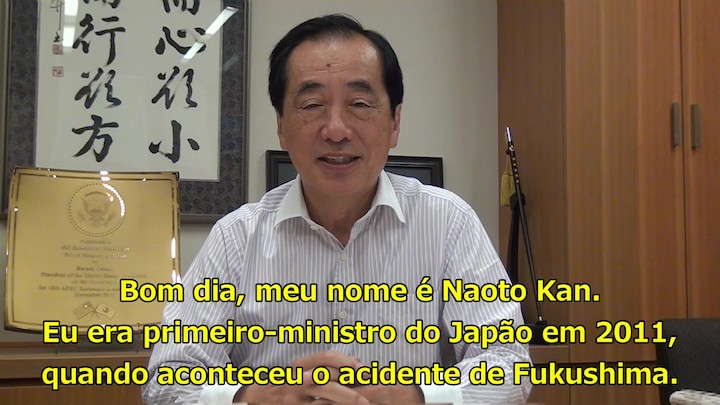 Fukushima: message from the former Prime Minister of Japan to Brazil (FUKUSHIMA: MENSAGEM DO EX-PRIMEIRO MINISTRO PARA O BRASIL)
Fukushima: message from the former Prime Minister of Japan to Brazil (FUKUSHIMA: MENSAGEM DO EX-PRIMEIRO MINISTRO PARA O BRASIL)
Japan, 2015, Director and Producer YasukoTakahashi, Interview, 9 min, Japanese with Portuguese subtitles.
Japanese filmmaker Yasuko Takahashi conducted an exclusive interview with Naoto Kan, former Prime Minister of Japan, who commanded the country at the time of the nuclear accident in Fukushima. The interview was first shown at the Comission for Science and Technology of the Brazilian Senate in October 2015.
Algeria, France, 2016, Director Larbi Benchiha, production: Aligal production and France Télévisions, documentary 52 min, French with Portuguese subtitles.
Film about France's atomic bomb tests in the South Pacific at the Mururoa atoll. The filmmaker allows the surviving atomic tests veterans - which unknowingly irradiated themselves and their families - to speak up. "My biggest regret is to have contaminated my daughters, and may be, my grandchildren“, says Florence Bourel. Florence was proud to work for the good of France. She was several times in the atomic bases of Moruroa. In her free time, she was diving and water skiing in the so called blue lagoon where the atomic bombs exploded. "The administration has never mentioned any risks. They only said, we should not eat fish from the lagoon.“ Today her daughter Marion, 22 years, suffers from several radiation-induced diseases and cancer. Like her mother, she is also afraid of their future: "And if I will have children, would they be born healthy?“ TRAILER
Mexico/Japan, 2010, 73 min, Director: Shinpei Takeda, Producer: Shinpei Takeda and Eiji Wkamatsu, Documentary, Japanese/English, Portuguese subtitles.
For a younger generation of Japanese, can their experiences of atomic bomb be truly understood? How does this memory stay alive for the coming generation? As the two drove down the American west coast visiting 18 survivors of atomic bomb as well as a holocaust survivor, they would hear the most intimate moments of their lives and reveal the cruel nature of psychological scars. With the vast landscape of American west in their background, the two reflects on their relationship to the contemporary history of Japan. Director Shinpei Takeda has fallowed the atomic bomb survivors in both north and south Americas for the last 5 years. TRAILER
Director Robert E. Frye, USA, 2011, 109 min, documentary, English, Portuguese subtitles.
In My Lifetime features moments in our history as well as current issues regarding nuclear weapons. This film is meant to be a wakeup call for humanity, to help develop an understanding of the realities of the nuclear weapon, to explore ways of presenting the answers for "a way beyond" and to facilitate a dialogue moving towards resolution of this Gordian knot of nuclear weapons gripping the world. The documentary's characters are the narrative voices, interwoven with highly visual sequences of archival and contemporary footage and animation. The story is a morality play, telling the struggle waged over the past six and half decades with the last act yet to be determined, of trying to find what is "the way beyond?" Photos were taken by Diane Love, who is also Executive Producer of the film. TRAILER / ABOUT THE FILM
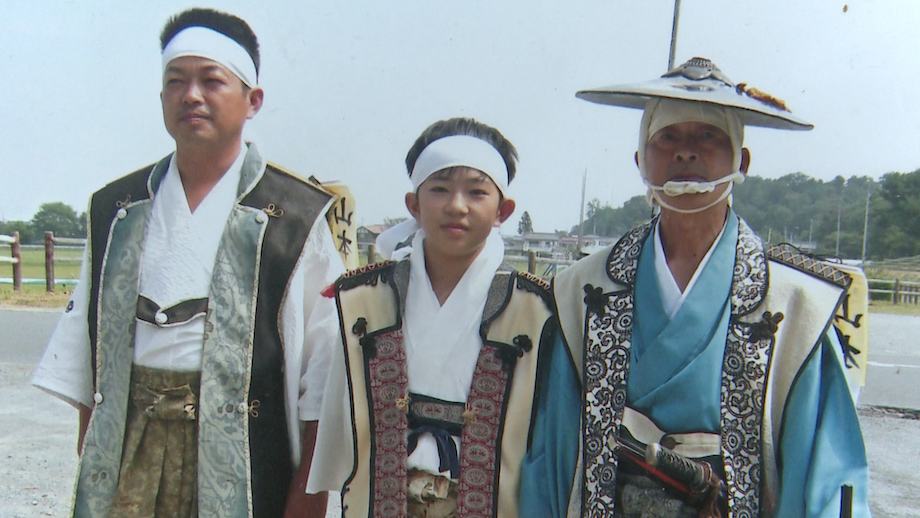
Japan, 2016, Director Tamotsu Matsubara, Production Power-I Inc, Documentary, 98 min, Japanese with Portuguese subtitles.
After the nuclear catastrophe, an area within 14 miles of Fukushima Dai-ichi nuclear power plant was designated as a No-entry zone. The Japanese government notified each prefecture that all cattle in the area should be slaughtered, so that meat contaminated by radiation could not be distributed. Most ranchers couldn’t help but obey this national policy, as they were forced to evacuate the area and couldn’t make any predictions about the future. However, a small group of cattle ranchers refused to accept this government mandate, and regardless of their own safety, have continued to feed their cattle. One rancher still lives in the banned area, another travels from temporary housing 50 miles away once every two days. Meanwhile, a combined team from universities started to monitor the health damage of these exposed cows. TRAILER
USA, 2012, Director, Producer, Writer, Cameraman and Editor: Adam Jonas Horowitz, Documentary, 87 min, English with Portuguese subtitles.
The term "savage" is used to refer to people from primitive cultures, but this documentary shows how savagery reaches new levels with the advent of advanced technology. In the 1950's, the U.S. conducted 67 nuclear tests in the Marshall Islands, vaporising islands and exposing entire populations to fallout. The people of Rongelap received near fatal doses of radiation from one of these tests, and were then moved to a highly contaminated island to serve as guinea pigs to test the affects of radiation on humans for almost 30 years, where they suffered from recurring cancers and birth defects that have affected multiple generations. The documentary is a heartbreaking and intimate ethnographic portrait of Pacific Islanders struggling for dignity and survival after decades of intentional radiation poisoning at the hands of the American government. Relying on recently declassified U.S. government documents, devastating survivor testimony, and incredible unseen archival footage, this untold and true detective story reveals how U.S. scientists turned a Pacific paradise into a radioactive hell. TRAILER
Argentina/Brazil, 2016, Director and Producer Roberto Fernández, 25 min, Documentary, Portuguese.
On March 2, 1924, in the rural area of Hiroshima, Mr. Morita was born. It was a difficult delivery. The doctor thought the child was dead because he was not breathing. He put the child in a corner of the room and smoked a cigarette. But his father did not believe the doctor's words, he took the child and hit the child's bottom and the child started to breathe. On August 6, 1945, the USA drops an uranium atomic bomb in the city of Hiroshima. Young Morita was there, serving the city as a policeman. Miraculously he survived the nuclear bombing of his city. And after living hell on earth, he moved to Brazil and started working for peace in the world, founding the Hibakusha Brazil for Peace Association, in São Paulo. TRAILER
Germany, 2020, Director Claus Biegert, Production Biegertfilm, Music by Zoro Babel, Documentary, 103 min, German / English with Portuguese subtitles. LATIN AMERICA PREMIERE
Hans-Peter Dürr, as a physicist he followed the footsteps of the world re-nowned Werner Heisenberg. As a peace activist he was torn between his PhD supervisor Edward Teller and peace Nobel laureate Josef Rotblat, both of them involved in the Manhattan project during World War II. When it became obvious that Hitler would not built an atomic bomb (Wunderwaffe), Rotblat immediately resigned from Los Alamos, Teller stayed and became the "father of the hydrogen bomb". In the early 1950s, the young and naive Hans-Peter from Stuttgart, Germany, stepped into the bomb euphoria in Berkeley, California. It shaped his life. He became a role model for a scientist with responsibility. TRAILER
Germany, 2021, Director and Author Reinhart Brüning, Documentary, 30`. English with Portuguese subtitles. WORLD PREMIERE
The documentary investigates the question of whether the consequences of a reactor disaster with multiple core meltdowns can really be eliminated within ten years. The decontamination project for Fukushima Prefecture is huge: Countless black sacks filled with radioactive material - a total of 14 million cubic meters - testify to this. An area of 9,000 square kilometers was gradually decontaminated. Roofs and walls were washed off. In parks and fields, five centimeters of soil were removed and filled into sacks. The Fukushima Daiichi power plant complex is now an industrial plant that employs 4,000 workers every day. The radioactive water from the cooling for the still heat-generating molten fuel rods is collected there. The team of reporters already counts 1,000 huge tanks, but space on the site is becoming scarce and new water is accumulating every day. Melted fuel elements from the reactors ran underground as radioactive lava - there is no salvage concept. Until now it is not even known exactly where this highly radioactive material is located.
Germany, 2014, Directors: Reinhart Brüning, Ranga Yogeshwar, Thomas Hallet, Wolfgang Lemme, Production WDR, Documentary, 43 min., English with Portuguese subtitles.
Famous science TV-journalist Ranga Yogeshwar has gained extensive access to Japan's battered Fukushima power plant. The spectacular report gives an oppressive and impressive insight into the current situation on site at the Fukushima reactor. The report also shows the everyday life of the people who are still living in the exclusion zone. Ranga Yogeshwar respects the efforts of the Japanese to contain the nuclear disaster. Fukushima and the entire Japanese society will never be what they were before the accident. ABOUT THE FILM
Brazil, 2014, Director and Produce: Daniel Abib, Video Art, 16 min, Portuguese with English subtitles.
Somewhere in the past an atomic bomb went off and the world was reduced to ashes. Shiro Ishio is a scientist who helped in the development of the bomb and is now trying to grasp the consequences of his act. He tries to understand its consequences: an anomaly and a mysterious girl. Confined to his routine in his laboratory, Ishio watches her through a monitor. A narrator reports on Shiro Ishio's diary that was found some 200 km from Okinawa, where a nuclear bomb would have exploded, leaving only the girl and a „anomaly“ alive. The film deals with the dilemma of the scientist of the ambition of science. What is predictable and what is unpredictable. A reflection on the question "Is there any relationship between science and virtue?“
France, 2019, Director Loic Barché, Producer Lucas Tothe, Sylvain Lagrillère, Fiction, 25 min, French with English and Portuguese subtitles. LATIN AMERICA PREMIERE
Algeria in the year 1961. France has just detonated its fourth atomic bomb. A group of seven soldiers is sent to the point of impact to take samples and measure radioactivity. But the further they go, the more the Captain, a war veteran in his fifties, is confronted with the paradoxes of a changing world, a world obsessed with progress. TRAILER
France, 2021, Director Keiko Courdy, Producer PIKA PIKA FILMS, Music by Ryuichi Sakamoto and Seigen Ono, Support from KissKissBankers, Documentary, 87 min, Japanese with English / Portuguese subtitles. WORLD PREMIERE
Waves crash eternally on the shore of Fukushima Daiichi Nuclear Power Plant. Next to a white facility for radioactive waste burning, black bags of contaminated soil pile up while a family looks for traces of their house. The film relates the stories of people who survived the tsunami and were forced to leave their home, people who came back in the darkest times, and people who came to work from far away, decontamination workers of Fukushima Daiichi. In the zone, invisible traumas are everywhere. There is no life without risk but what risk are we ready to take? In Japan, everyone wishes to forget and go forward, but the traces can not be erased that easily. TRAILER
Denmark, 2014, Director Peter Anthony, Producer Jakob Staberg, Statement Film, Co-production: WG Film, Doc-Fiction with Kevin Costner, Robert De Niro, Matt Damon, Stanislav Petrov, Sergey Shnyryov, u.a., 105 min. Russian, English with Portuguese subtitles.
1983. The Cold War is seconds from exploding. The world holds its breath as the superpowers USA and Russia are arming themselves against each other with thousands of nuclear missiles. On the 26th of September, Russian radars intercept five nuclear missiles on their way to Russia. Stanislav Petrov is commander-in-chief. The decision that would start World War III rests on his shoulders. Should Russia fire nuclear missiles at the United States in defence? 'The Man Who Saved the World' is an epic Cold War thriller that sends shivers down your spine, while also being a gripping story about the man who actually saved the world, and his struggle to get his life back on track before it is too late. TRAILER
Japan, 2016, Director Futoshi Sato, Executive Producer Tamiyoshi Tachibana, Cast: Yukiya Kitamura, Kenji Anan, Sota Aoyama, Yuri Nakamura, Drama, 90 min, Japanese with Portuguese subtitles.
2:46 PM on March 11, 2011. The earthquake hits and Japan is thrown into a panic. The cooling system at the Fukushima Daiichi Power Station goes down and the temperature rises. The countdown to an even more enormous catastrophe has started. Futoshi Sato: „Born in the area that was devastated by the 2011 earthquake, I wanted to talk about it, but I was wondering what might be the approach to make it a movie. For his part, Mr. Tamiyoshi Tachibana wondered about the possibility of adapting the book written by Tetsuro Fukuyama, Deputy Director of the Cabinet of Naoto Kan. This book `The Nuclear Crisis – A Testimony from the Residence of the Prime Minister´ is a fundamental work that tells the truth of the events that occurred on those days at the Residence. If this project was able to start and be realized, it is thanks to the total and complete implication of Tamiyoshi Tachibana." TRAILER
Canada, 2018, Director Alain Vézina, documentary, 52 min, French with English and Portuguese subtitles.
On August 9, 1945, the US explodes its second atomic bomb over Nagasaki. Held prisoner by the Japanese, a group of Catholic nuns from Canada survived the horror of the bombing. After Japan's surrender, these women traumatized by memories of the nuclear holocaust were imprisoned in a sanatorium. Some of these nuns have written down the story of their captivity and their terrible experience with the atomic bomb horror. These precious documents, many of which have never been released before, show that the nuns not only witnessed the devastation caused by the atomic bomb, but that they also helped the other survivors, especially children. Many years later, some of the Canadian nuns succumbed to the long-term effects of radiation exposure and joined the 74,000 Nagasaki victims. TRAILER
USA, 2017, Director Brittany Prater, documentary, 83 min, English with Portuguese subtitles. LATIN AMERICA PREMIERE
A young woman’s investigation into her hometown’s secret involvement in the Manhattan Project triggers a chain reaction of encounters through which it becomes clear that the topic of nuclear waste has been more successfully buried than the waste itself. The film portrays the manner in which Superfund site cleanup is often mishandled in the U.S., and informs the viewer about how toxic waste can spread, and why waste-site cleanup is often prolonged or avoided altogether. Because private companies contracted to clean up waste sites tend to hold considerable political leverage, they are able to devise strategies that greatly extend cleanup schedules, thus ensuring the longest possible inflow of government funds. TRAILER
Argentina / Brazil, 2019, Directed by Roberto Fernández, Documentary 39 min, Japanese with Portuguese subtitles.
Hiroshima. The parents of the Mukai brothers were home alone when the atomic bomb exploded on Hiroshima and destroyed their home. The Mukai brothers were orphaned in the middle of atomic hell. “I don't want to remember, every time I remember, my life diminishes. I don't want to talk, I want to forget. But I have to talk about the cruelty and suffering that war can cause for people, because the consequences should not be forgotten ”, says Mr. Seiji Mukai. Mrs. Toshiho Masada tells for the first time to her son Kenji, the horrors experienced with the atomic bomb. MORE INFO
All films listed will be shown on the Vimeo platform of MAM Rio Cinematheque under the names of the filmmakers from May 20th to 30th, free of charge! Nevertheless We welcome any contribution. The festival team thanks its supporters in Rio de Janeiro: The Museum of Modern Art Cinematheque (MAM Rio) and Cachaça Magnífica de Faria.
Seit seiner ersten Ausgabe im Mai 2011 ist das Internationale Uranium Film Festival weltweit das bekannteste Filmfest zum Thema Atomkraft. Bis heute fanden mehr als 60 Uranium Film Festivals in mehr als 40 Städten in sieben Ländern wie Brasilien, Kanada, Deutschland, Indien, Jordanien, Portugal und den USA statt. Mehr als 100 Filmemacher, Produzenten, Schauspieler und Schauspielerinnen nahmen daran teil und stellten ihre Filme persönlich dem Publikum vor. „Das Uranium Film Festival ist einzigartig", sagt Jörg Sommer, Vorsitzender der Deutschen Umweltstiftung, "denn es versucht, das komplexe Thema Atomkraft und seine Risiken für alle zugänglich zu machen.“ Dcoh dies ist nur möglich mit der Hilfe von Sponsoren und Spenden. Helfen Sie uns!
Rio de Janeiro/RJ
CEP 20.240-194 / Brasilien
info@uraniumfilmfestival.org
